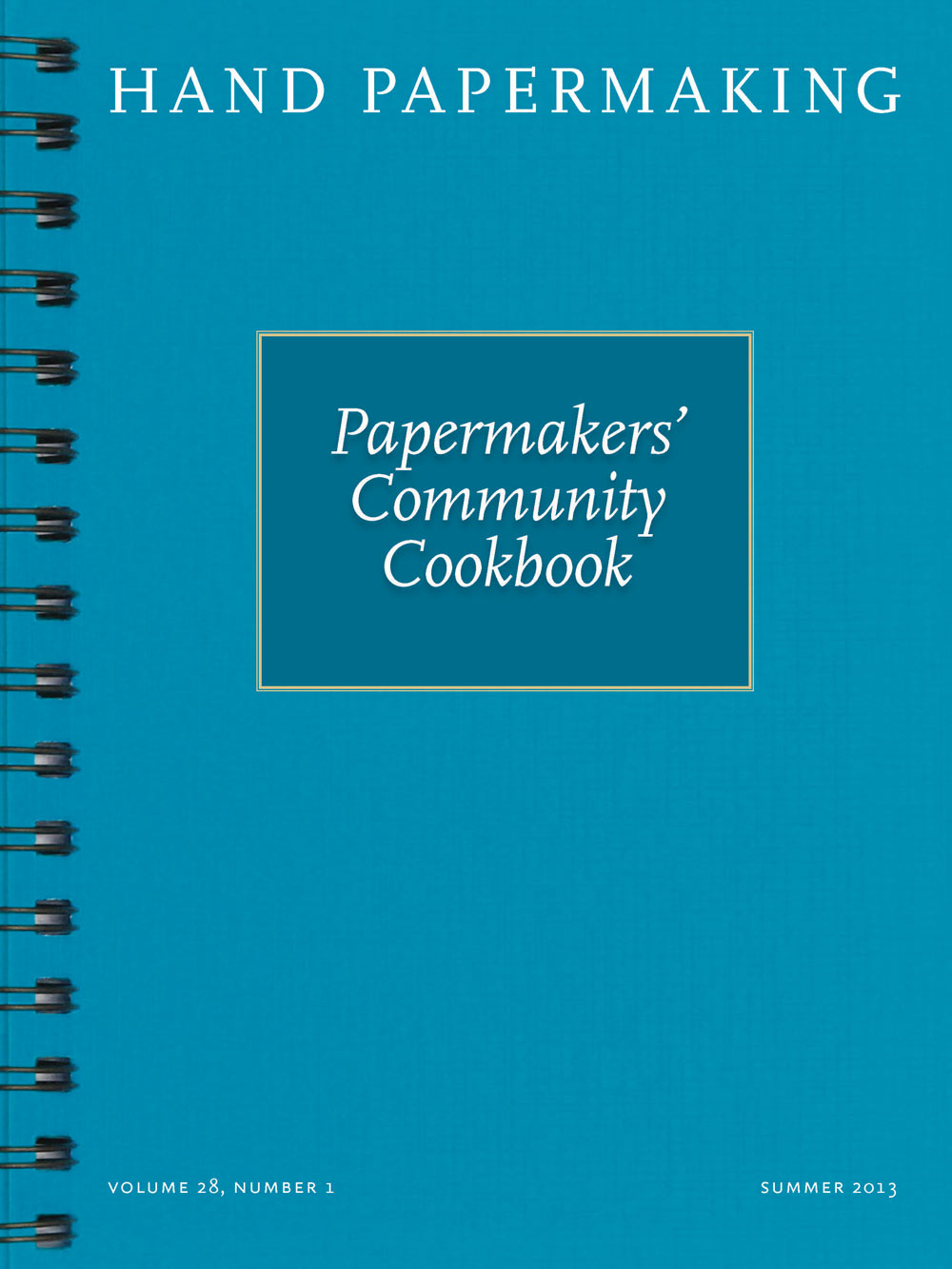
Summer 2013
:
Volume
28
, Number
1
Bridget O'Malley is a master papermaker and co-owner of Cave Paper Inc, a handmade paper mill specializing in natural-dyed flax papers. She teaches papermaking at the Minneapolis College of Art and Design, and offers book, paper, and print workshops around the country. She completed a five-year papermaking apprenticeship under the direction of Timothy Barrett at the University of Iowa Center for the Book. She also received an MA/MFA in printmaking from the University of Iowa. O'Malley is the recipient of the 2012 Minnesota Book Artist Award. I like to call this the "disappearing tablecloth" because it reminds me of the parlor trick that involves yanking out a tablecloth from beneath the place settings, yet leaving the table still set. Set a mould on a table, or place it over an empty catch basin or shallow vat. Lay a piece of mosquito netting on the mould and hold it in place with the deckle. Drape a piece of Mylar in the mould and deckle.





